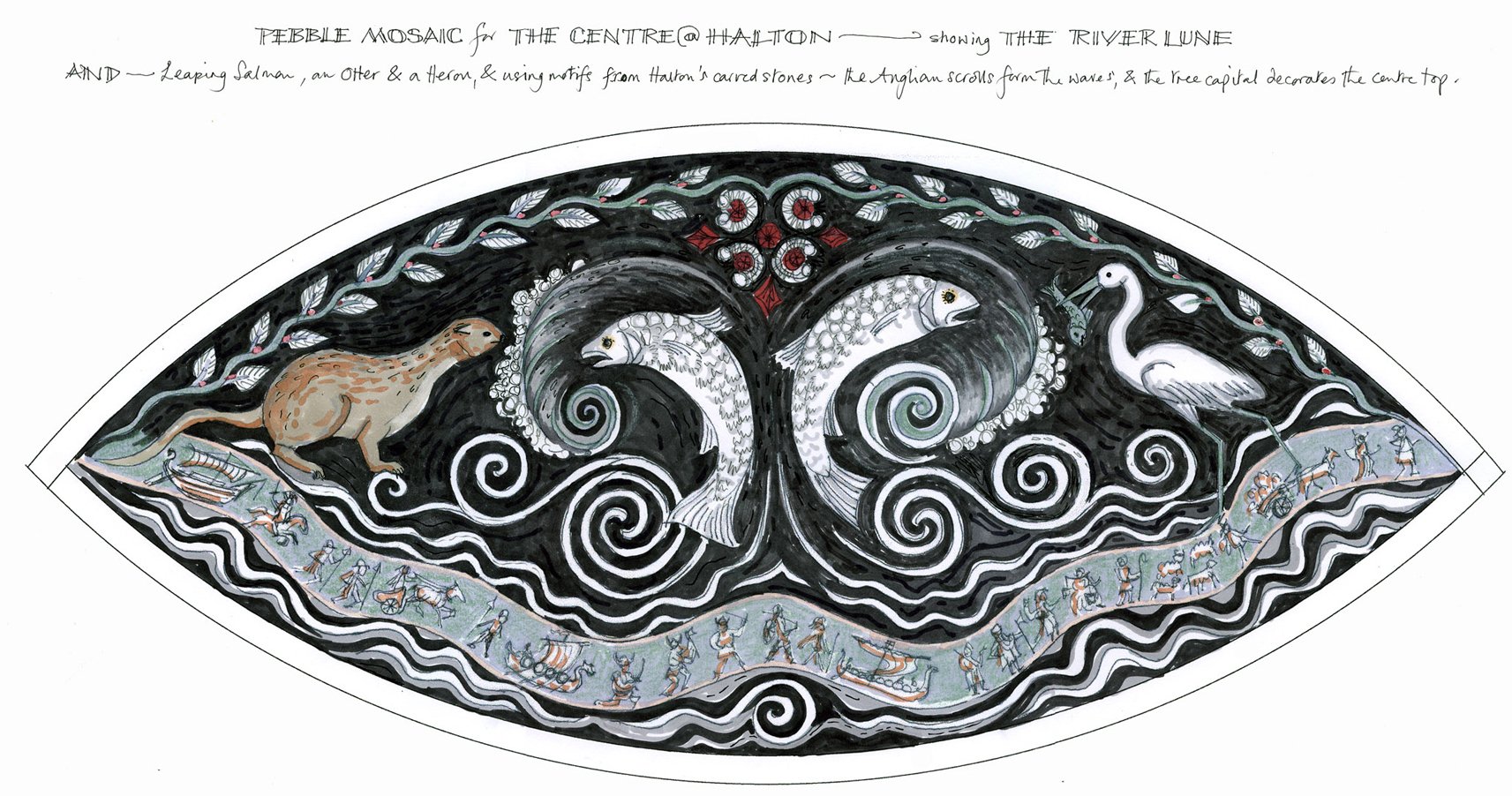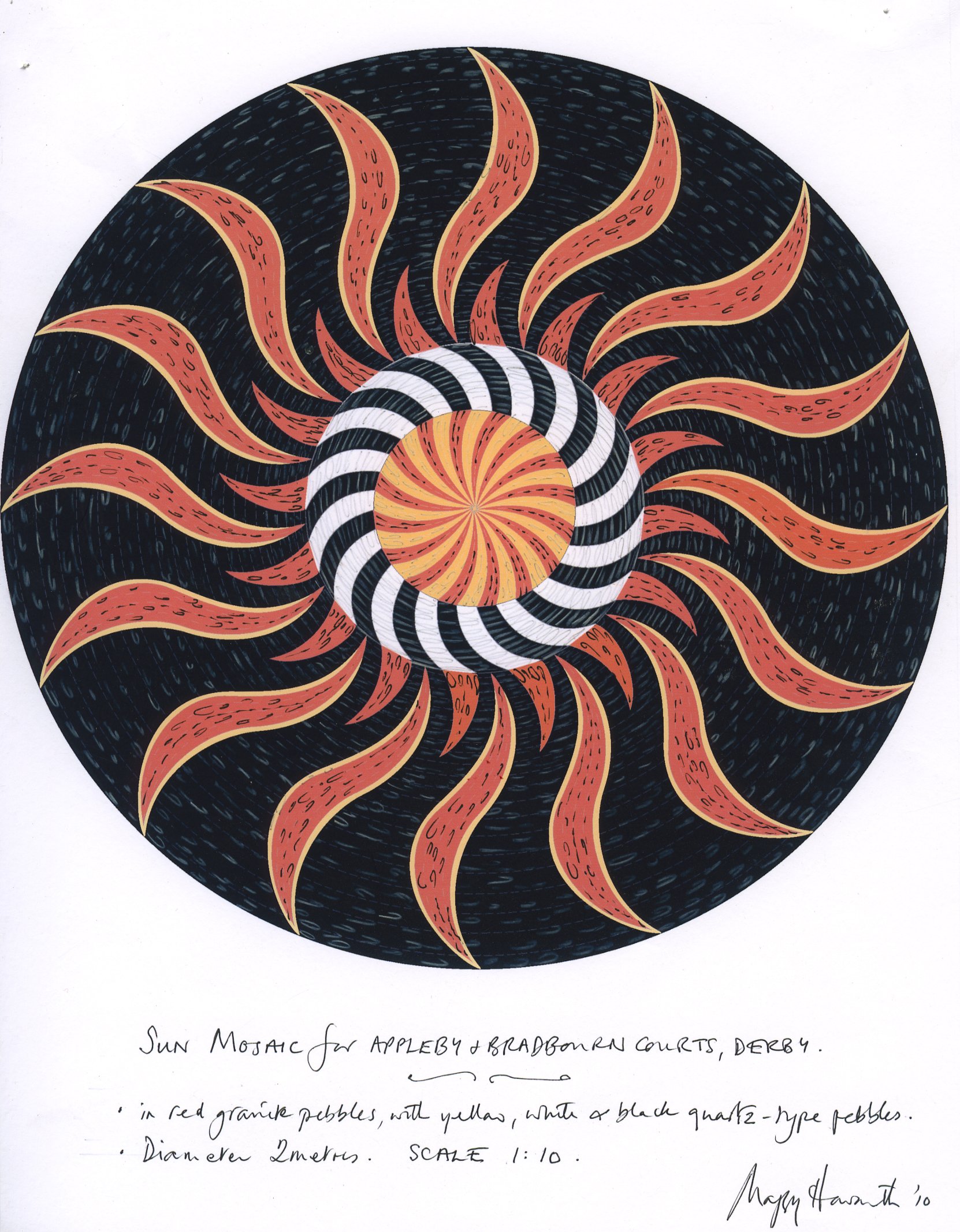How to Design a Pebble Mosaic.
A pebble mosaic is made up of tiny patches of colour, like the brush marks of a pointillist painting or the stitches of embroidery. Each stone in a pebble mosaic represents one mark or dot, and to make a recognisable shape a considerable number of such marks are needed. It follows therefore, that in a small mosaic such as a threshold stone, the imagery should be simple, with a clear outline and a minimum of detail. It should be able to be 'read' without difficulty by everyone who sees it.
Small fish mosaic
In larger mosaics, it is possible to attempt a more complex drawing of images and to explore details of tone, pattern and decoration within the motif. However, motifs should still be kept simple and bold, especially when augmented with geometrical borders, scrolls and similar connecting devices.
Gryphon and surrounding details, from a large mosaic at Cholmondeley Castle.
Unfortunately, machinery and mechanical subjects, whilst they may be representative of industry and trades, are difficult to translate into the medium of pebbles. Pebble mosaic is intrinsically more suited to organic subjects and the natural world. Although the history of a place may present an overwhelming case for including a subject such as a beam engine in a pavement, efforts to bend the medium to the purpose are likely to be disappointing. Direct carving or sandblasting the imagery onto the stone is a better solution because the precise detailing of the subject can be reproduced.
Designs usually start with reference images, sketching and playing with compositional elements. Keeping things simple is important.
Initial design sketch
It all comes back to the knowledge of the medium. Think about the stones and how they will describe the form. Refine the design, don’t use six pebbles where one would do and search out special stones for specific details such as eyes or eyebrows. Sketching at 1:10 scale and knowing the lengths of the pebbles you will be using is the best way to ensure the design will work with the size of the pebbles.
Colour drawing for a mosaic in the centre of Halton on the river Lune.
When drawing try to get to the essence of the subject matter, for the medium of pebbles and the character of the design, this is better than being naturalistic. Make several drawings. Refine and rework until the images flow and harmonise with each other.
Designs in pencil on the theme of the Lowther family history.
It is also important to consider that the design needs to work from every angle. Almost always it will be approached and viewed from all sides. It will very rarely be viewed directly from above and instead viewed at the angle of our vision. There must always be something of interest to see, wherever you are looking from.
Final design drawing for a very large public commission for Livingston town centre, Scotland.
The Livingston town square mosaic partially constructed in our yard.
Consider the natural colour palette of the stones, how to create contrast to make the design bold and striking while also using colours that compliment each other, like in this Sun design for Appleby and Bradbourn courts in Derby.









